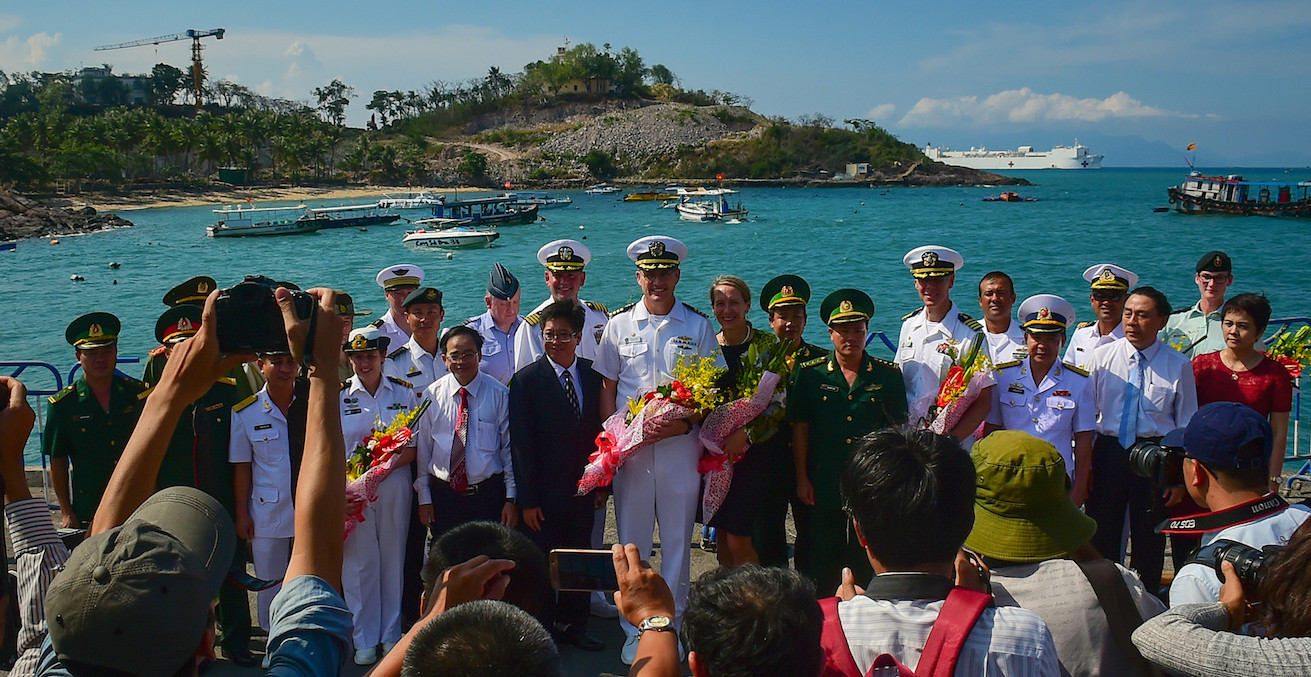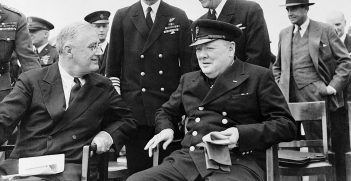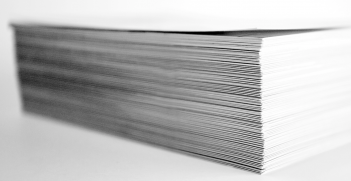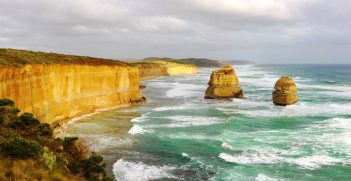To Each Their Own Indo-Pacific

The number of countries that find the Indo-Pacific a useful way of interpreting the world is growing. But each country has its own Indo-Pacific.
There is, of course, no such thing as the Indo-Pacific. Like the Asia-Pacific, or Asia itself, the Indo-Pacific is simply a way for governments to frame the international environment to suit their policy objectives in particular circumstances.
But the number of countries that find it a useful way of interpreting the world is growing. As Emmanuel Macron reminded Australians in Sydney recently, France is on that list.
Its growing use reflects the impact of China’s rise and the more general westwards re-weighting of power within Asia — from Japan to China, from the Chinese coast to the hinterland and outwards to India.
It is best understood as a maritime counterpart (and in some eyes a counterweight) to the shifting forces across continental Eurasia. It encompasses the energy supplies, production chains, infrastructure and security connections — both state and non-state — that link the Middle East, West Asia and East Asia. It also incorporates US security and economic connections across the Pacific.
The Indo-Pacific is a framing device, not a geographical reality — its proponents shape it around their different interests. Each country has its own ‘Indo-Pacific’.
For Australia, the idea of the Indo-Pacific makes good sense. It includes both the oceans surrounding our continent, with Southeast Asia acting as the linchpin between them. The words appeared in official Australian statements well before other leaders started using them. The idea has now been formally endorsed in documents from the Gillard, Rudd, Abbott and Turnbull governments.
Compared with the Asia-Pacific, a term which gained currency after the Second World War as a way of knitting together security and economic links between the United States and East Asia, the Indo-Pacific reflects a view of the world that has deep roots in Australia’s history. For most of the 19th and the first half of the 20th centuries, Australians thought about their strategic environment through this same westwards perspective. Australia’s security, trade and communications all flowed back across the Indian Ocean to Britain through the British Empire’s own string of pearls in Singapore, Colombo, Bombay, Aden and the Suez Canal.
India’s version of the Indo-Pacific is an extension of its Look East policy in Southeast Asia and a defence of its proprietorial interests in its maritime surrounds. For Japanese Prime Minister Shinzo Abe, it is more about China. Abe wants to ensure that the infrastructure networks across Asia to Africa are not dominated by China and Chinese standards.
Indonesia’s Indo-Pacific is tentative. It notes its own centrality to the concept but worries about the potential effect on existing ASEAN institutions and fears hardening divisions with China. France’s version is a re-assertion, through its island territories in the Indian and Pacific oceans, of its claims to global power status. China has its own Indo-Pacific in the Maritime Silk Road, part of the Belt and Road Initiative.
The United States was a latecomer to the concept. Echoing Abe, US President Donald Trump spoke in Hanoi in November 2017 about a ‘free and open’ Indo-Pacific. The US position was elucidated in the subsequent US National Security Strategy, which describes a ‘geopolitical competition between free and repressive visions of world order’ taking place in the Indo-Pacific.
It is instructive to think about the use of the words ‘free and open’ in both their Indo-Pacific and Asia Pacific contexts.
In the Asia-Pacific, the words have a clear economic focus. APEC’s mission statement commits its members to ‘championing free and open trade and investment [and] promoting and accelerating regional economic integration’. For Washington and Tokyo, the Indo-Pacific relates to political systems and has an implied normative sense of ‘more democratic’.
One of the strengths of the Australian government’s Foreign Policy White Paper is its striking defence of openness in both senses. It draws a direct connection between the Indo-Pacific’s prosperity and stability. Australia will ‘encourage the United States and China to ensure economic tension between them does not fuel strategic rivalry or damage the multilateral trading system’. Unfortunately, there is little sign so far that Australia’s encouragement is having much effect.
The White Paper also commits the Australian government to engage with ‘major Indo-Pacific democracies’, including by working ‘in small groups, to promote … a balance in the region favourable to our interests’.
In part, this is code for the Quadrilateral Security Dialogue. The Quads have a richer and more active life in the pages of academic journals and blogs than they do in practice. The four countries maintain very different interests, which place limits on the group’s capacity to move much beyond policy generalities.
But the Quad will form part of a diverse and fluid network of relationships, groups and coalitions that will be required to address the myriad economic, security, environmental and social challenges facing the Indo-Pacific.
This will look nothing like the institutions of the Asia-Pacific, built around the hub and spokes of a strong alliance system and inclusive economic forums like APEC.
Sometimes the Indo-Pacific bodies will be designed to cooperate (the East Asia Summit), and sometimes they will be designed to compete (the emerging infrastructure alternatives to the Belt and Road Initiative). Sometimes China will be central (Asian Infrastructure Investment Bank), and sometimes ASEAN will be (as in the Regional Comprehensive Economic Partnership).
Sometimes the groupings will engage distrustful neighbours, sometimes distant partners. Sometimes the connections binding them will be economic, sometimes normative, sometimes geographic.
Only a strategic and economic ecosystem as varied as this will be able to accommodate the Indo-Pacific’s diverse faces.
Allan Gyngell is National President of the Australian Institute of International Affairs and an Honorary Professor in the ANU’s College of Asia and the Pacific.





